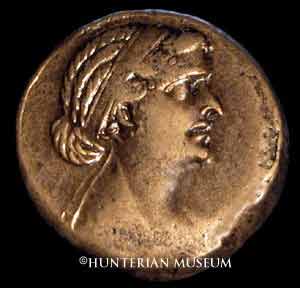An interview with Rakesh Kaul, the author of the novel The Last Queen of Kashmir about the life of little known 14th century Queen Kota Rani, who ruled the lands in the face of adversity.
The Last Queen of Kashmir was published May 2016 by HarperCollins India.
Vikram Zutshi:
When did you first encounter the story of Kota Rani? What does her story tell us about Kashmir in the 14th century?
Rakesh Kaul:
I stumbled on Princess Kota, the central protagonist of The Last Queen of Kashmir, by accident.
I was researching the Dhar clan of Kashmir to which my wife belongs. Among the Dhar luminaries is the great liberator of Kashmir, Pandit Birbal Dhar. An
influential tax collector serving under the tyrannical regime of the Afghans, who had ruled Kashmir from 1750 to the early 19th Century, he led
a secret appeal to Maharaja Ranjit Singh to take over the Valley. Departing incognito with his son, Birbal Dhar left behind his wife and daughter-in-law
hiding with Qudus, his milkman. Judas emerged in the form of a family relative, Tilak Chand Munshi, who betrayed the whereabouts of the ladies to the
governor, Azim Khan.
Troops were sent to bring the two women to the governor’s palace. Birbal’s wife was a noted beauty and she knew that the evil Khan would dishonor her to
punish Birbal for his now discovered mission to overthrow the regime. Oral history records that she swallowed poison and that her last words were:
"Know that Kashmir has yet a Kota Rani. Remember me to my Lord!"
Finding out this story got me wondering about who was this Kota Rani - who was this inspiring symbol of feminine resistance that was central to the social history that Kashmiri Pandit women carried with them over the intervening centuries? The bare facts were easily accessible, but did not justify the banner that Kota represented for Birbal’s wife in 1819; clearly there was much more hidden behind the veil of time. Thus began my 21st Century journey through the detritus of Kota’s 14th Century world to try and put the pieces together.
Vikram Zutshi:
Describe the premise of your book. What do you hope readers will take away from it?
Rakesh Kaul:
‘What is faster than the mind?’ is the very first question that challenges Princess Kota of Kashmir in The Last Queen of Kashmir during her
University graduation exam. It is Kota’s one-word answer to this question – ‘Desire’, and in it lies the premise of the book and as well as the seed of the
Kashmiri path of life. Unlike the limited materialistic, dualist view of the world or spiritual frameworks that prescribe morality bordering on fanaticism,
the middle way of the Kashmiri civilization integrated the spiritual with the material. ‘Follow your passion’ is a common refrain among the youth today.
But ‘passion’ comes from the Latin word passio which means ‘suffering’.
What did Kota desire herself is of course her life story and what drove the principals around her? This is what the book examines in great detail about a
fascinating, powerful beautiful woman and her world. Kota reflects Kashmiri culture’s deep understanding when she expands on her answer that “Desire -
which is rooted in lust, the immediate infatuation of the ten senses or ego or emotions or the gratification of the limited mind will be incinerated like
Kamadeva, the divinity of passion. Desire, which is a genuine offering of one’s true nature to dharma, will prevail eternally, because will is then united
with sustainability.”
Vikram Zutshi:
What are the correlations, if any, with present day Kashmir?
Rakesh Kaul:
In some ways the parallels are almost eerie. If Kota were to answer this question she would note that for the first time, after a gap of nearly 700 years,
Kashmir has a woman ruler after her. She would be struck that Mehbooba Mufti, the newly appointed Chief Minister was born on May 22, 1959. Kota’s
astrologer would confidentially advise her that on that day Mars was in Cancer, the fourth house in Astrology which could potentially make Mehbooba an Angaraka like Kota.
Mehbooba, like Kota, was reportedly married against her wishes. Not surprisingly, in the eyes of the astrologer, she ended up being divorced – a parallel
to Kota’s first husband’s demise! After an appropriate period of mourning at the loss of her father she, again like Kota, had to reluctantly concede that
the interests of the people demanded that she partner with the ‘enemy’ (the BJP political party) and rule Kashmir. An alert Kota would be struck by the
past parallels and wonder about what else could overlap in the future? Kota would observe that Mehbooba has two daughters while she herself had two sons.
Mother to mother, queen to queen she would say to Mehbooba read my story and be the better armed by it. Woman to woman she would provide sympathy and
understanding that angaraka is not a punishment but the goddess’ protection.
Kashmir is facing external attacks from Jihadis very similar to what Kota faced from the Ghazis. There is an ongoing civil insurrection led by militant
Islamists much like what she had to handle. The economy is in a shambles and there is unrest that threatens to spiral into something worse.
The Kashmiri Hindu Pandits have been exterminated in Kashmir as a result of a horrific genocide. This story is as much a story of hope as it is of
resistance. Kota is an icon of resistance against Jihadi invaders and a symbol of the universal values that Kashmir’s civilization stands for, her enduring
message, We were we will be, is especially relevant to the challenges of contemporary times. It is a story that is especially relevant to the
challenges that the world faces with refugees, pluralism versus exclusivism, non-violence versus violence, knowledge versus faith, experience versus mind
control and esoteric pursuits versus exoteric diktats. The fundamental question of desire, Hum ko kya chaye. ‘What do I want?’, has a
very different answer today versus the complete clarity in Kota’s time.
Vikram Zutshi:
What is the inspiration for the cover image on your book?

Cleopatra coin
Rakesh Kaul:
Kota would have been very aware of powerful queens who preceded her. Sitting astride the Silk Road, stories from the West and more importantly coinage
would have entered Kashmir. She could well have been intrigued by the story of Cleopatra who has some interesting parallels with her own life. While
Cleopatra is slightly masculine looking she was a great seductress. Kota is likely to have been more feminine and her power was based on her Shakti. In the
story she sends an ivory pendant to Udyandev which had a frontal image of her. But that was for her would be husband. She would not permit an eye to eye
frontal gaze with the public, so a silhouette much like this Cleopatra coin would likely be what would attract her. Kota reveals feminine vanity
occasionally and may well have seen herself as Cleopatra plus. This then was the starting ideation point of the book cover.
Vikram Zutshi:
What can the contemporary woman learn from Kota Rani? Would you call her a 'feminist' figure?
Rakesh Kaul:
Kota offers at least two very powerful and liberating learnings for the global, contemporary woman. Yes, one can call her a “feminist’
figure though in her day and age it would have had different connotations.
Zang Trai
which is the third day of the Kashmiri New Year is commonly celebrated as Women’s day by Kashmiri Pandits. Kota would have celebrated it
also. In it lie some interesting strands of how Kashmiri feminism is different and may be of interest to modern women. First, it was not
only about equality with the male (seen as a default society’s role model). Alternatively, it also was not about complementing the male, the two halves making a whole. In the story Kota goes on to say that man without woman is still. Woman without man is an aimless meteor. So what can we glean that was different here?
The first cultural feminist feature of Kota’s world is that women are not only the grantors of life but they are also the grantors of
the secret of immortality.
Notwithstanding the recent history of patriarchal gurus, the highest values and truths of Kashmiri civilization were always controlled and
transmitted by women. While the phenomena of Shiva-Shakti are seen broadly among Hindu traditions and the Rig Veda has some
precepteresses, the latter is rare. Swami Ramakrishna’s initiation is one rare contemporary example from Bengal. But the exception only
proves the Kashmiri rule. In Kashmir it was the women who ruled at the supreme level which is why Kashmir was called Stridesh, the
Land where women rule.
Two extraordinary women come to mind here. The first of course is Ardh Tryambakha to whom one can ascribe the honor that all that the
Kashmiris know began from her. The second is the supreme preceptor Keyuravati who was Abhinavagupta’s guru’s guru’s guru’s guru. Ah, the
divine Keyurvati who gave so much to Kashmiris. There is possibly a third, from the fabled land of Odiyana in Kashmir, but she will have to
wait until time parts itself and I can catch her glimpse.
So when Parvati returns back to her parent’s home on the third day, Zang Trai, was it to continue the mother daughter sacred transmission?
It was extremely important to Kota that she never loses this moral and spiritual high ground out of ignorance, because this is what was the
secret of Sharada civilization's success and fulfillment. She went back to the University for this refresher learning much as we do today.
This is also the secret which women around the world can imbibe. Never to let go or cede the power of the highest truths of your
civilization.

photo Souvik Kundu
The second key feature of Kota’s Kashmiri feminism is the notion of fearless symmetry as the basis of interaction with the masculine.
It is the notion that the feminine can be completely mapped one on one onto the masculine. It is also the notion that in the absence of
the masculine, or more appropriately, in the presence of an inert masculine, the feminine is complete in itself. Finally, it is dynamic.
Udyandev and Kota’s marriage reveals this model at play in the story. Power oscillates between them and even a seemingly weak Udyandev
reveals his latent strength while Kota shows her kinetic side. She is the warrior queen. It makes the claim that Chess could have
originated in Kashmir a strong one, because where else was there a culture that actually espoused in daily life the principle pf the
feminine supreme that governs the game?
Vikram Zutshi:
Would you like to see it adapted for film or television? If yes, who do you see playing the lead?
Rakesh Kaul:
As they say first things first and second things never. The Last Queen of Kashmir is a deeply textured and rich book which should be first enjoyed
in its own rights. To the degree that this question needs to be answered it would be that it should be a man! If the reader is surprised it is because in
the novel the only person who successfully impersonates the queen at a very critical juncture is a man. On a humorous note I did get a message from the
doyen of Indian art that he wanted to see Priyanka Chopra as the actress playing Kota. I have also noted today that India has voted in the Times 50 poll
and she is the most desirable woman of 2015. The whole premise of the story is about desire so let me, a lowly scribe stand aside. Let Priyanka Chopra meet
Kota for the audition test. May the movie screening begin.